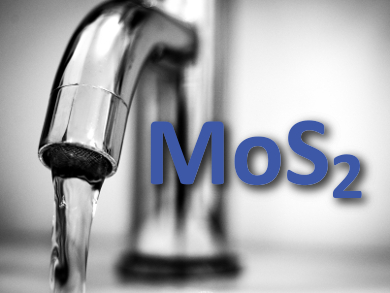Membrane technology is useful for water filtration and desalination due to its simplicity and low energy consumption. Two-dimensional materials, such as graphene or graphene oxide (GO), can be used to create membranes with a layered structure incorporating nano-capillaries. Such membranes can reject ions and allow a high water throughput, which makes them promising for filtration and desalination applications. However, GO membranes swell in the presence of water, which lowers their salt rejection.
Robert A. W. Dryfe, Mark A. Bissett, and colleagues, University of Manchester, UK, have prepared functionalized membranes of exfoliated molybdenum disulfide, which can be used for desalination and nanofiltration. The team produced the membranes by filtering a dispersion of exfoliated MoS2 flakes through a polyvinylidene difluoride (PVDF) supporting membrane. The resulting membranes were functionalized by immersing them in solutions of different dyes (crystal violet, sunset yellow, or neutral red).
The finished membranes are about 5 μm thick and can reject up to 99 % of the ions found in seawater. This is sufficient to convert seawater to drinkable water in one pass. The membranes’ water throughput is about five times higher than for GO membranes. The material is stable when immersed in water for over six months and shows no swelling or decrease in ion rejection.
- Desalination and Nanofiltration through Functionalized Laminar MoS2 Membranes,
Wisit Hirunpinyopas, Eric Prestat, Stephen D. Worrall, Sarah J. Haigh, Robert A. W. Dryfe, Mark A. Bissett,
ACS Nano 2017.
DOI: 10.1021/acsnano.7b05124




